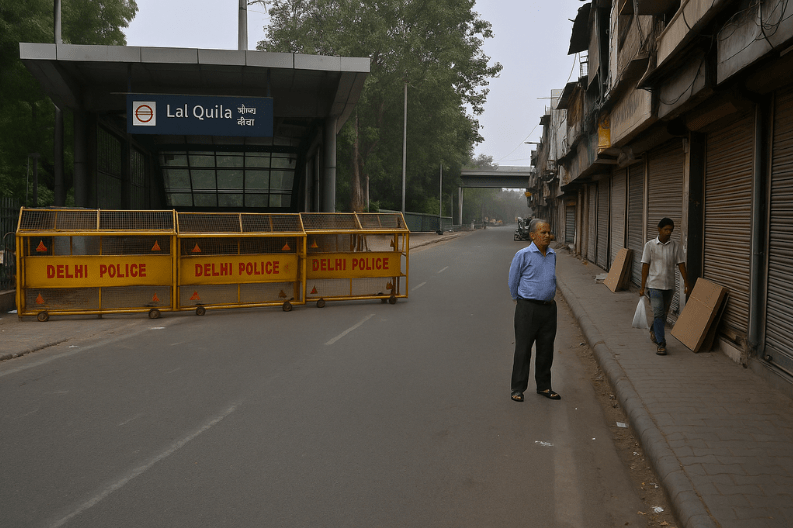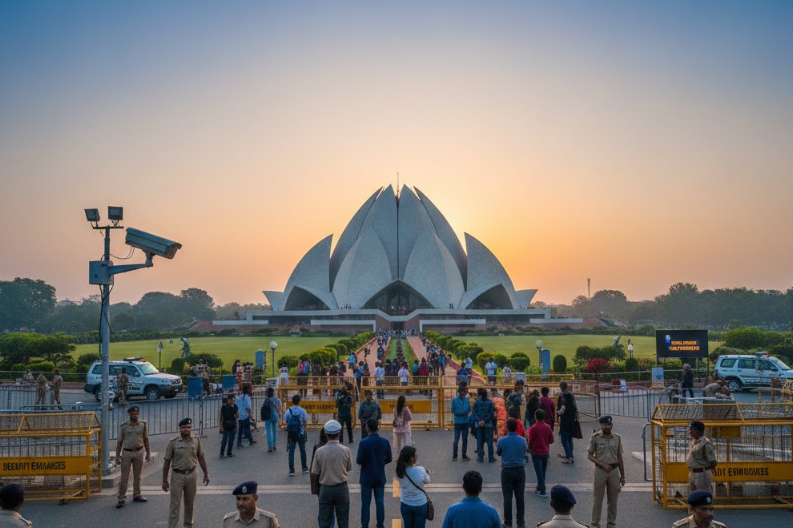A recent tragedy in Delhi has deeply affected the city and its people. A powerful explosion near the historic Red Fort on Monday killed at least 12 people and left around 20 others injured. This heartbreaking event has raised serious safety concerns and changed daily life for many. Authorities quickly took action to protect the public, marking the beginning of what experts are calling the Impact of Red Fort Blast on Delhi’s local economy and tourism.
To ensure safety, the Lal Quila Metro Station will remain closed until further notice. The Delhi Metro Rail Corporation made this decision as part of strict security measures. Officials believe this step is essential to prevent any further risk and to reassure residents and tourists.
However, this metro closure has caused major problems for nearby businesses. The areas surrounding the Red Fort, including Lajpat Rai Market, Sadar Bazaar, and Chandni Chowk, rely heavily on visitors and tourists. With fewer people visiting, local vendors are now struggling to make ends meet.
Shopkeepers in Lajpat Rai Market expressed their worries about declining sales. Many of them sell clothes, souvenirs, and handicrafts that attract both locals and tourists. “Our business depends on footfall,” said one shop owner. “With the metro closed, we hardly see any customers.” The loss of tourism has created uncertainty for these small traders, many of whom live day-to-day on their earnings.
The same situation exists in Sadar Bazaar and Chandni Chowk. Normally, these areas are full of life and color, with thousands of shoppers moving through the narrow lanes. Now, the crowds are gone, and many shopkeepers fear it will take weeks, if not months, for normal business to return.
This tragedy has also affected the city’s cultural and emotional landscape. The Red Fort, built in the 17th century by Mughal Emperor Shah Jahan, is not just a monument; it is a UNESCO World Heritage Site and one of India’s most visited attractions. It stands as a symbol of India’s history and independence. Attacks near such landmarks not only harm people but also hurt the city’s reputation and the sense of national pride.
Economists say the financial damage could be severe if tourism remains low. Tour operators, guides, food stalls, and auto-rickshaw drivers all depend on tourist activity around Red Fort. The combined loss of revenue from these small businesses could impact hundreds of families.
Police and security agencies are working continuously to investigate the cause of the blast. They are examining CCTV footage, questioning witnesses, and tightening security across key public locations. The Delhi Metro team is cooperating with authorities to ensure safety before reopening the station.
Meanwhile, local residents are showing resilience. Many volunteers and shop owners have come together to support victims’ families and donate food to those affected. Civic groups are also demanding improved security near crowded tourist spots.
Tourism experts believe that restoring safety and confidence among visitors will be crucial. They suggest launching awareness campaigns and quick compensation schemes for affected businesses. Such actions can help Delhi recover economically while maintaining its strong cultural identity.
As investigations continue, the city remains on high alert. Citizens are urged to stay vigilant, follow official safety updates, and report any suspicious activities. Despite the fear and uncertainty, Delhi’s people continue to show unity and strength in the face of adversity.
The Impact of Red Fort blast will likely be felt for weeks, both economically and emotionally. However, with community support, better security, and collective resilience, Delhi can rebuild confidence and move toward healing, showing that even in tragedy, its spirit remains unbroken.
Blog



